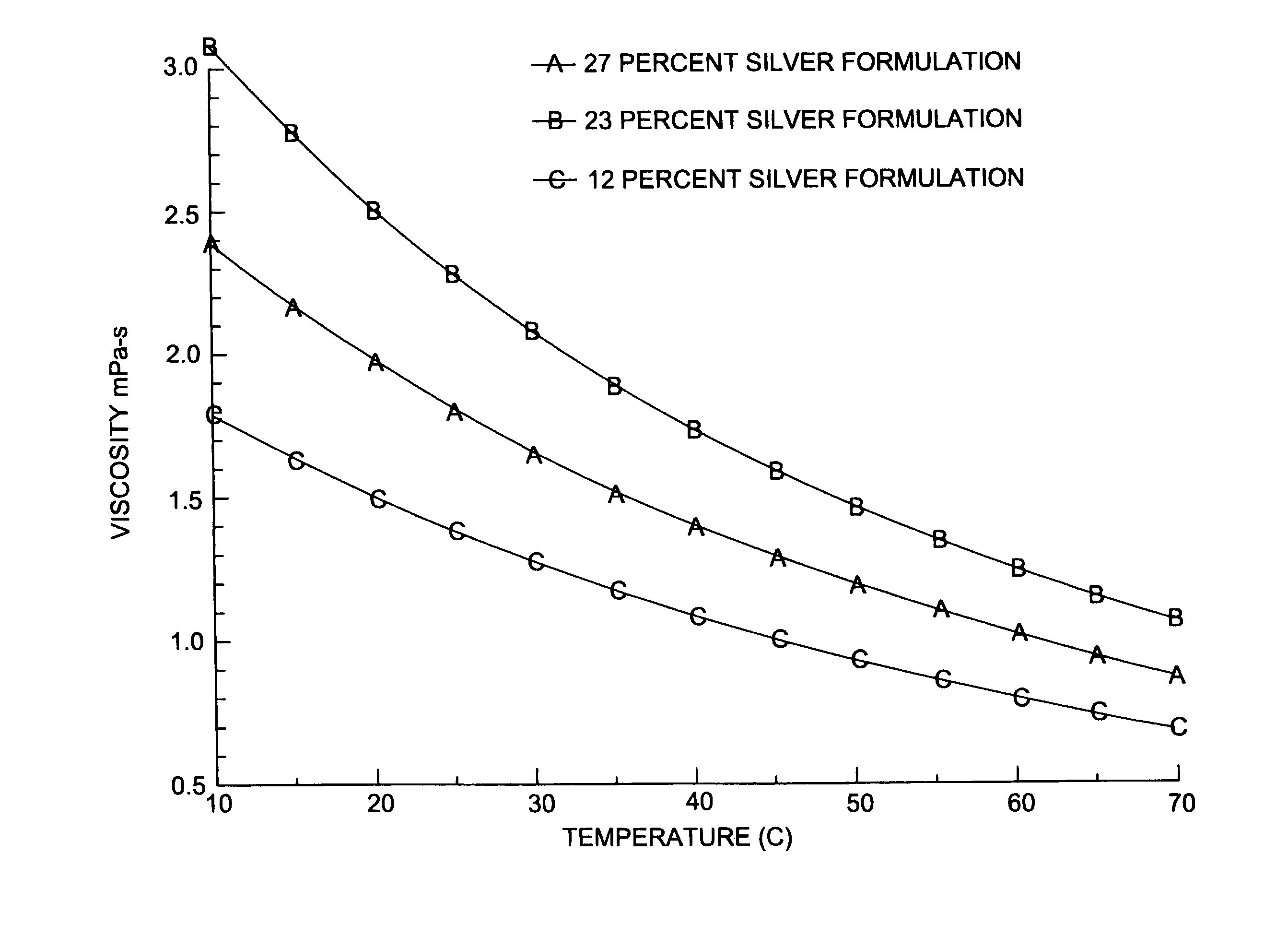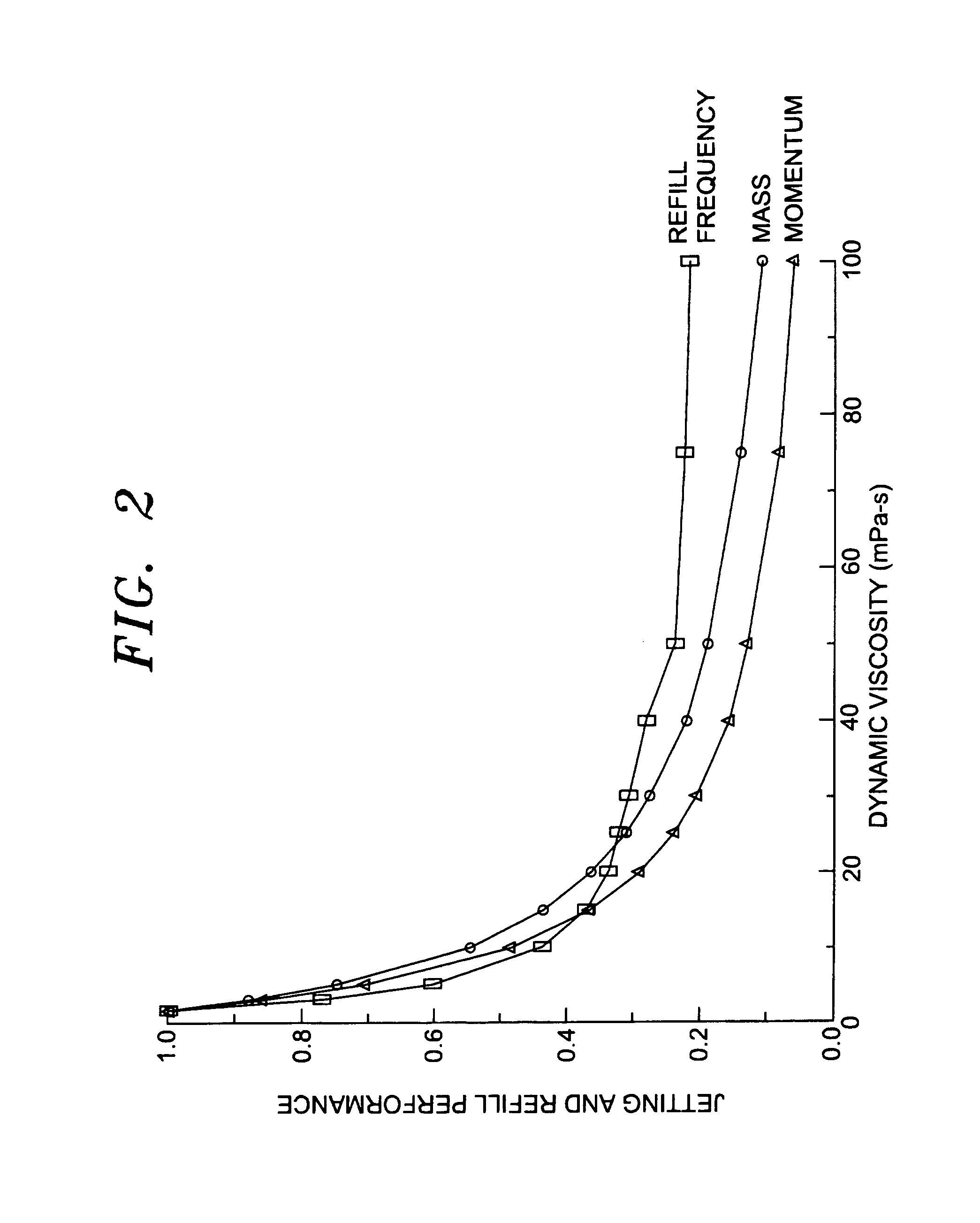Thermal printing of silver ink
a technology of thermal printing and silver ink, which is applied in the direction of inks, instruments, measurement apparatus components, etc., can solve the problems that discovery could not have been anticipated, and achieve the effect of low viscosity and high energy levels
- Summary
- Abstract
- Description
- Claims
- Application Information
AI Technical Summary
Problems solved by technology
Method used
Image
Examples
Embodiment Construction
[0016] Section-I: Viscosity Effects
[0017] First, a discussion on the viscosity effects of inks heavily loaded with solid, electrically conductive particles. The viscosity of two conductive ink formulations were measured (23 and 27 wt. % silver). The viscosity of the 23% silver formulation was 2.62-2.72 mPa-s at normal lab temperature (approx. 22 C). The 27% formulation was even lower—2.25 mPa-s.
[0018] Initially, it was thought that the measurements were in error because how could inks with such heavy solid loading have such low viscosity; and furthermore, how could the ink with the highest solid loading have the lowest viscosity? Both of these questions can be addressed with a theoretical examination of the formulations. The formulations are shown in Tables 1-3.
[0019] These tests were made using a silver paste (a wet but primarily of solids silver dispersion, having some dispersant). The particles were shown as less than about 50 nm in diameter (a particle size less than about 50...
PUM
 Login to View More
Login to View More Abstract
Description
Claims
Application Information
 Login to View More
Login to View More - R&D
- Intellectual Property
- Life Sciences
- Materials
- Tech Scout
- Unparalleled Data Quality
- Higher Quality Content
- 60% Fewer Hallucinations
Browse by: Latest US Patents, China's latest patents, Technical Efficacy Thesaurus, Application Domain, Technology Topic, Popular Technical Reports.
© 2025 PatSnap. All rights reserved.Legal|Privacy policy|Modern Slavery Act Transparency Statement|Sitemap|About US| Contact US: help@patsnap.com



